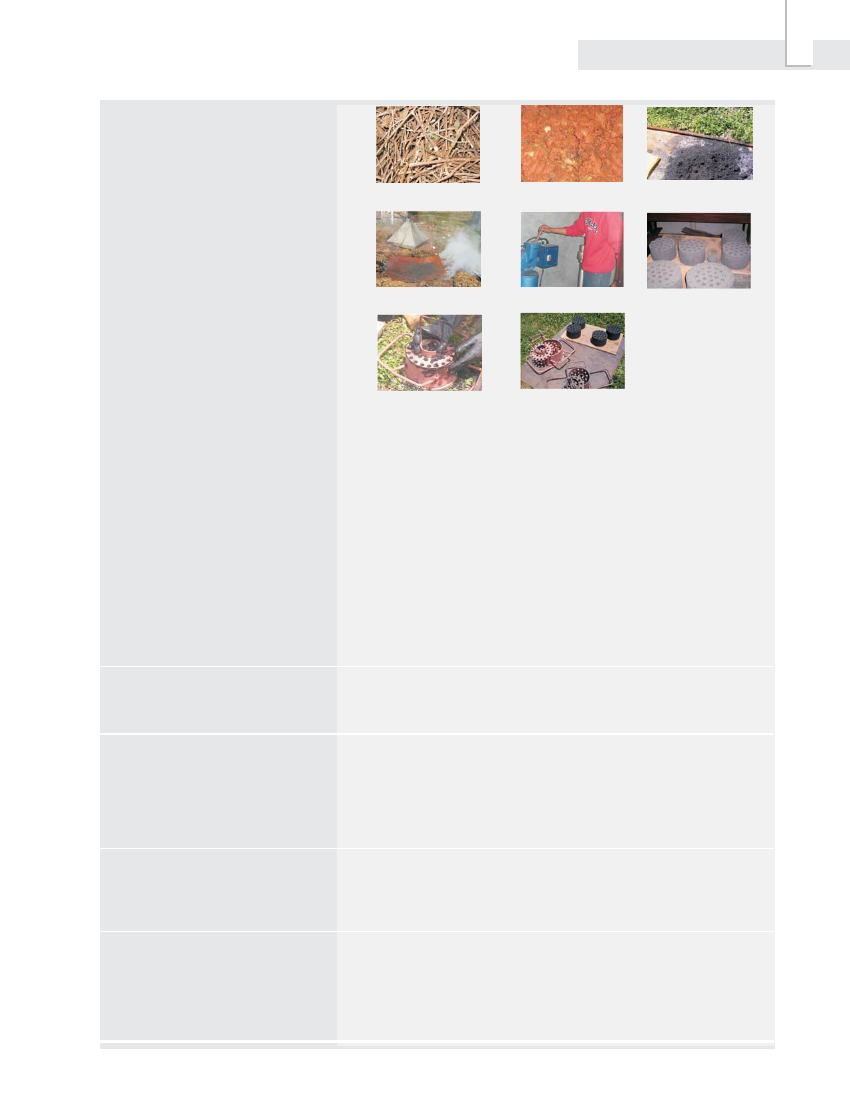
Inventory of Innovative Indoor Smoke
Alleviating Technologies in Nepal
41
Sun dried banmara
Benthonite Clay
Preparing mixture
Charring banmara
Grinding charcoal Dried briquettes
Disseminated regions
Advantages
Disadvantages
Major organisations involved in
promotion/dissemination
Briquetting mould
Preparing briquette
Photograph 4.3: Materials and production of beehive briquette
Source: RONAST
Water is added to the mixture to form a paste which is then filled in
a mould of different sizes. After pressing the paste in the mould
manually, the paste is removed from the mould and dried under the
sun for five days. It is difficult to maintain consistence in weight as
the compaction is done manually. The materials and procedure
required for producing beehive briquette is shown in Photograph 4.3.
The cylindrical type briquettes are common with a height of 5.5 inches
in diameter. There are 19 evenly distributed holes of 1 cm diameter
along the direction parallel to the cylindrical axis, which facilitates
proper supply of air for better combustion. It weighs 0.5 kg and its
color varies from gray to black. It burns for 60 to 90 minutes.
Bishankhunarayan of Lalitpur; Nawadurga and Kamdi of Banke;
Marsangidhi and Turture of Tanahu; and Panchpokhari and Shantinagar
of Jhapa. Suitable in all areas where raw material is easily available.
Easy to handle, transport and store as an alternative environment
friendly fuel and less polluting. Furthermore, it has a good business
potential because of low investment requirement. Suitable for slow
heating (simmering) and cooking, space heating and more applicable
in barbecue preparation. Suitable for all geographic and climatic
condition.
The production is stopped during monsoon since raw materials need
to be completely dry before charring. Lack of adequate funding for
capital investment and training are the barriers to implement this
technology at a large scale.
IDS-N, NAST and RECAST.